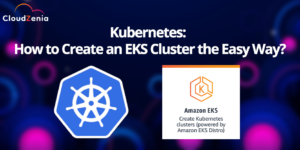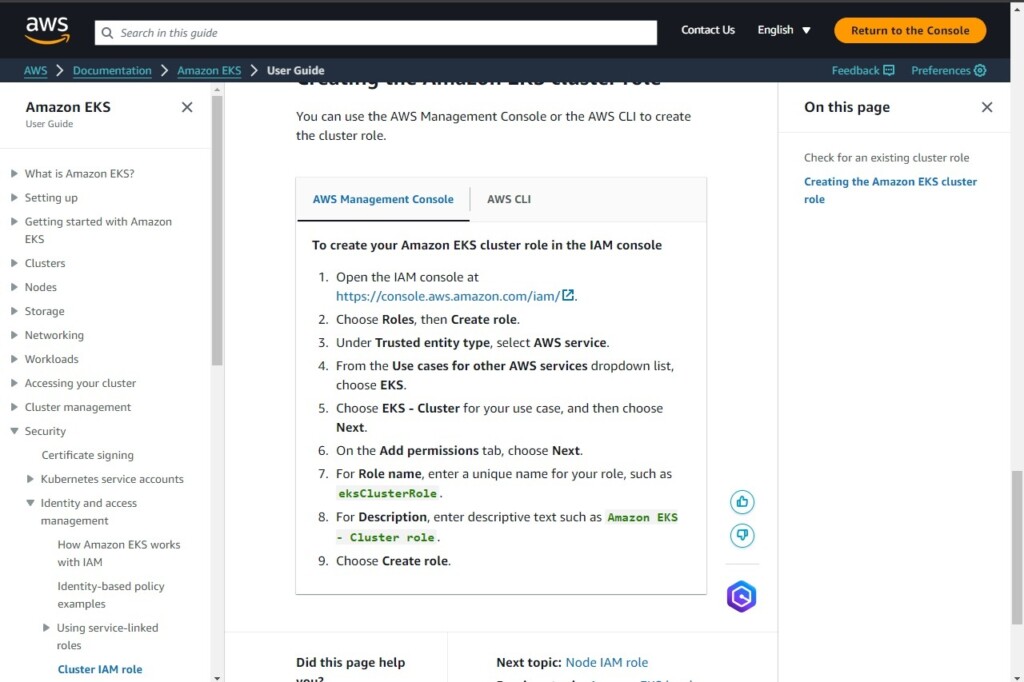
This is the second part of the Kubernetes series.
In case you missed you can refer to PART – 1. Now let’s discuss EKS.
As you get more into the world of Kubernetes, you’ll for sure run into Amazon EKS, a Kubernetes service managed by Amazon Web Services (AWS). In this long blog, we’ll go deep into Amazon EKS, from the simple understanding to how it’s used in real life.
So, let’s talk about what EKS is.
What is Amazon EKS?
Amazon Elastic Kubernetes Service (EKS) is a fully managed service that simplifies setting up, managing, and expanding applications packed in containers with Kubernetes on AWS. With EKS, running Kubernetes applications becomes straightforward, as it takes care of the complex infrastructure management tasks.

How EKS Simplifies Cluster Management?
One of the key benefits of Amazon EKS is its ability to simplify cluster management. EKS automates many aspects of Kubernetes cluster management, including provisioning, scaling, and monitoring. This allows you to focus on developing and deploying applications rather than managing infrastructure.
Here are some key benefits for why we should use EKS:
- Secure Networking and Authentication: Amazon EKS leverages AWS networking and security services, providing secure and privileged integration with AWS’s extensive features. It also supports strong authentication by integrating with AWS Identity and Access Management (IAM).
- Easy Cluster Scaling: Scaling a cluster is manageable and very effective to the point of customization on Amazon EKS. It adjusts the functionalities of the Horizontal Pod Autoscaler and the Cluster Autoscaler to handle various workloads.
- Managed Kubernetes Experience: Amazon EKS provides a wide array of tools for managing Kubernetes clusters, including eksctl, AWS Management Console, AWS CLI, API, kubectl, and even Terraform. This variety offers flexibility and control in managing resources.
- High Availability: Amazon EKS is designed with service continuity in mind, ensuring high availability through deployment across multiple availability Zones. This redundancy guarantees that if an issue arises in one zone, the overall service remains unaffected, maintaining high availability at all times.
- Integration with AWS Services: Amazon EKS is designed to integrate seamlessly with a wide range of AWS services, enhancing its capabilities. This includes integration with load balancers and observability tools, enriching the service ecosystem and boosting overall functionality.
How to Create an EKS Cluster in AWS?
To create an EKS cluster in AWS is a straightforward process, thanks to the user-friendly interface provided by the AWS Management Console.
But that’s enough theory. Let’s get our hands dirty!
Here’s your step-by-step guide to creating an AWS EKS cluster:
- Create a Cluster: [H3]
- Create an IAM role for EKS if does not exist: [H3]
- To do that, follow documentation from AWS.
- After creating the IAM role, you can see it in the dropdown menu, so select it.

- Configure the Cluster:
- Set up the necessary controllers, drivers, and services.
- Here you have to specify networking. Select VPC, subnets, and security groups.
- After doing that, click on the “Next” button.
- After that, you can select the add-ons you want to install within your cluster. It will help you to manage your cluster effectively via AWS.
- After configuring you can review it and click on the “Create” button.
- Deploy Workloads:
- Adjust your Kubernetes workloads to match your chosen node type.
- Deploy that simple web server (or any app you fancy). We will do hands-on more in the next blogs.
- Ongoing Cluster Supervision:
- Keep an eye on your workload. Use AWS services to streamline operations.
- The AWS Management Console is your backstage pass.
- That is it. Hurray! you have just created your AWS EKS cluster.
- Delete Cluster:
- After creating it and getting hands-on, you should also know how to delete it, so that you will not get a surprise bill from AWS.
- To do that, you can click on “Delete Cluster”, give the name of your cluster, and click on “Delete”.
Conclusion
Setting up and managing an EKS cluster in AWS can be accomplished with ease, thanks to the streamlined tools and interfaces AWS provides.
From the initial setup, where a cluster is named and integrated with IAM roles, to the deployment of applications suited to specific needs, the process is designed to be straightforward. Additionally, AWS offers robust tools for monitoring and managing the cluster, ensuring that operations run smoothly and efficiently. When the time comes to delete the cluster, the process is just as simple, preventing any unwanted costs.
This guide has walked through the essential steps to get started with Amazon EKS, making the journey into Kubernetes management as seamless as possible.
To explore more on what AWS, Kubernetes, EKS, clusters, and more terms in cloud computing and get guides on how to use them, refer to our blogs on the CloudZenia website.


